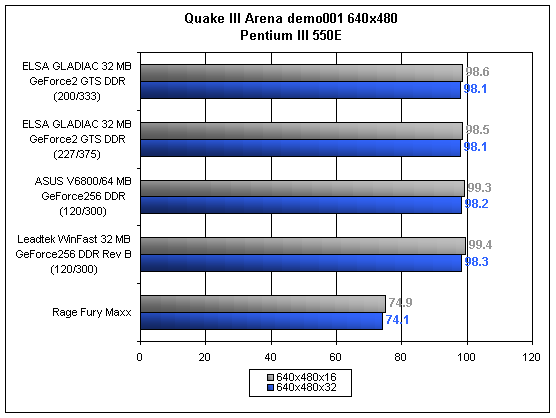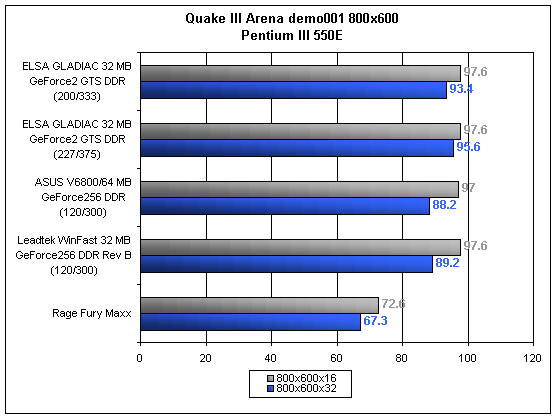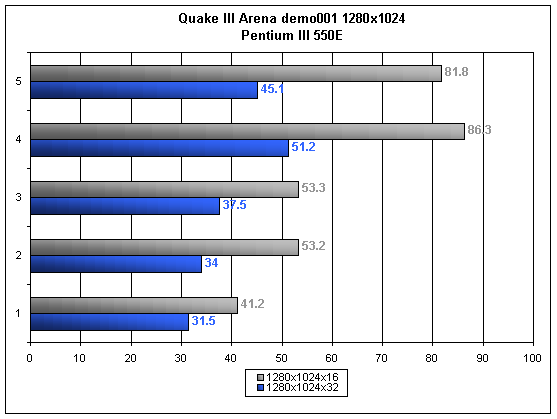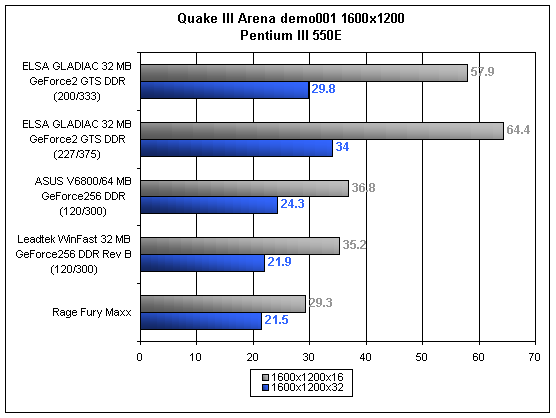Quake III Arena Performance- demo 001





It is not really until the resolution of 1024x768x32 that the power of the GeForce 2 GTS becomes apparent. Below this resolution, the bottleneck is not the video card, as the ELSA GLADIAC performs almost identically to the GeForce 256 DDR cards. At and above the magic resolution of 1024x768x32, the GLADIAC shows what it is made of. The difference is subtle at first, with the GLADIAC only edging over the DDR GeForce 256 by 24%. When at 1600x1200x16 the speed increase to be gained is a large 64% over that of a DDR GeForce. When overclocked, this deference only gets larger with the GLADIAC performing 83% faster at 1600x1200x16.
The difference between the GeForce 256 and the GLADIAC is more readily seen at 16-bit color due to the fact that at 32-bit color the memory and not the core serves as the bottleneck. True, the GeForce 2 GTS does perform faster in 32-bit color, however the difference between the GeForce 2 GTS and the GeForce 256 is always larger when in 16 colors. The GPU can only move as fast as the memory will let it, thus the GLADIAC is held back by the relatively slow memory clock, as are all GeForce 2 GTS cards at high resolutions and colors.










0 Comments
View All Comments